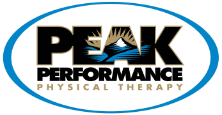Q: What do you think about Pilates for the treatment of low back pain? I hear some of my friends swear by it and others say it made them worse. I've just started having some back problems so I want to head it off at the pass, so-to-speak.
A: Various studies have been done trying to identify the best way to approach back pain. Clearly, staying active and exercising seems to help. But the key question remains: what's the best type of exercise for this problem?
Some of the exercise methods currently being studied include lumbar stabilization (core training), McKenzie (direction-specific) exercises, muscle retraining, and Pilates exercise. You might find the results of a recent study using Pilates to treat low back pain of interest.
The research was conducted by physical therapists investigating the possibility of developing a clinical prediction rule (CPR) for Pilates-based exercise. CPRs are guidelines to help therapists identify and recognize factors that predict a response or nonresponse to treatment. Clinical prediction rules (CPRs) are helping physical therapists find ways to identify which patients would likely respond best to individual treatment approaches.
By studying patients who respond well to this approach, it might be possible to tell (in future patients) which ones would do best with Pilates training. The Pilates method includes breathing, balance, concentration, control, coordination, precision, and rhythm in movement.
Each exercise starts out gradually and builds up in terms of range, strength, and endurance required. This type of exercise progression is referred to as graded-movement. Motor control of both the large (mobilizer) and small (stabilizer) muscles is a part of the exercise program. Mobilizing muscles allow trunk movement while stabilizers provide stiffness and support to each spinal segment.
Everyone in the study (a total of 96 people) had low back pain but no previous back surgeries. Everyone filled out several surveys to assess pain, function, fear-avoidance behaviors, and general health. Range-of-motion measurements for the spine and trunk were recorded. Special tests for muscle endurance, ligamentous laxity, and spinal instability were also performed.
Everyone was treated twice a week for eight weeks with the Pilates method. Results were determined by retesting all the baseline measures. Slightly more than half the participants had at least a 50 per cent improvement in their test scores.
Then the authors examined a number of different factors or "variables" to see if any of them were consistently present in this successful group. They looked at things like age, body mass index, duration of symptoms, number of previous episodes of back pain, presence of leg pain or other symptoms, and hip rotation.
They found five predictors that suggested which patients with low back pain would respond to Pilates-based treatment. These included: trunk flexion (70 degrees or less); symptoms lasting less than six months; no pain, numbness, tingling, or other symptoms in either leg; being overweight (BMI greater than 24 kg/m2); and hip rotation greater than 25 degrees on either side (right or left leg). When three, four, or all five of these factors were present, there was a significant likelihood that Pilates-based exercise would help the patient.
These results are considered preliminary. Further study will be needed to confirm that the information fom this study can be used to set up a clinical prediction rule for Pilates-based exercise when treating low back pain. A randomized-controlled, clinical trial will be needed to validate this conclusion. If it all pans out as expected, therapists will be able to determine early on which patients will likely respond well to the Pilates method.
Reference: Lise R. Stolze, DSc, MPT, et al. Derivation of a Preliminary Clinical Prediction Rule for Identifying a Subgroup of Patients with Low Back Pain Likely to Benefit from Pilates-Based Exercise. In Journal of Orthopaedic & Sports Physical Therapy. May 2012. Vol. 42. No. 5. Pp. 425-436.
Peak Performance Physical Therapy provides services for physical therapy in Baton Rouge.
